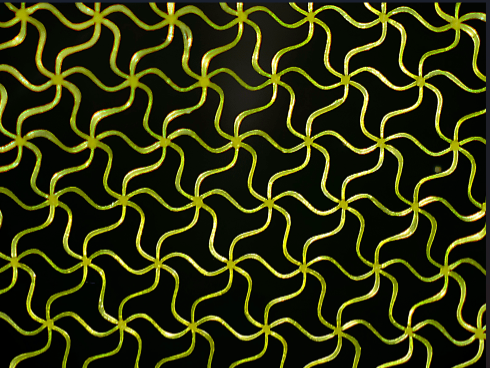Melt electrowriting of liquid crystal elastomer scaffolds with programmed mechanical response
Mehrzad Javadzadeh, Jesús del Barrio, Carlos Sánchez-Somolinos
Adv. Mater. 2023, 35, 2209244
Abstract: Recently, significant advances have been achieved to precisely program the response of liquid crystal elastomers (LCEs) through extrusion-based additive manufacturing techniques; however, important challenges remain, especially when well-defined scaffolds based on ultrafine fibers are required. Here the melt electrowriting of reactive liquid crystalline inks, leading, after ultraviolet-light-induced crosslinking, to digitally positioned uniform LCE fibers with diameters ranging from hundreds of nanometers to tens of micrometers is presented, which is hardly accessible with conventional extrusion-based printing techniques. The electrowriting process induces the preferential alignment of the mesogens parallel to the fiber’s axis. Such an alignment, defined by the printing path, determines the mechanical response of the crosslinked material upon stimulation. This manufacturing platform allows the preparation of open square lattice scaffolds with ultrafine fibers (a few micrometers in diameter), periods as small as 90 µm, and well-defined morphology. Additionally, the combination of accurate fiber stacking (up to 50 layers) and fiber fusion between layers leads to unprecedented microstructures composed of high-aspect-ratio LCE thin walls. The possibility of digitally controlling the printing of fibers allows the preparation complex fiber-based scaffolds with programmed and reversible shape-morphing, thus opening new avenues to prepare miniaturized actuators and smart structures for soft robotics and biomedical applications.










